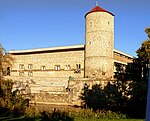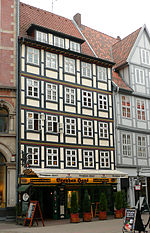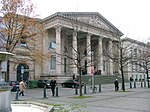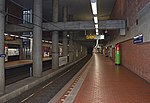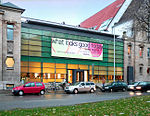Kreuzkirche, Hanover

The Kreuzkirche is a Lutheran church in the centre of Hanover, the capital of Lower Saxony, Germany. The Gothic hall church is one of three churches in its Old Town; the other two are the Marktkirche and the now-ruined Aegidienkirche. It was dedicated in 1330 to the Holy Cross. The church became Lutheran in the Reformation. It was expanded then, and renovated in the 19th century. Destroyed by bombs in World War II, it was rebuilt in simpler form. It received an altar by Lucas Cranach which had been in the Schlosskirche that was not rebuilt. The official name became then Schloss- und Stadtkirche St. Crucis Hannover (Palace- and town church of the Holy Cross). From 1982, the Kreuzkirche parish became part of the Marktkirche parish.
Excerpt from the Wikipedia article Kreuzkirche, Hanover (License: CC BY-SA 3.0, Authors, Images).Kreuzkirche, Hanover
Kreuzkirchhof, Hanover Centre (Centre)
Geographical coordinates (GPS) Address External links Nearby Places Show on map
Geographical coordinates (GPS)
| Latitude | Longitude |
|---|---|
| N 52.3733 ° | E 9.7328 ° |
Address
Schloß u. Stadtkirche St. Crucis (Kreuzkirche)
Kreuzkirchhof 11
30159 Hanover, Centre (Centre)
Lower Saxony, Germany
Open on Google Maps

